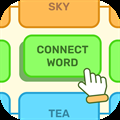What An Annoying Hotel Elevator Taught Me About Game Design

Last week, I was traveling to see an upcoming game in a foreign country. I can't tell you anything I learned about the game for another month, sorry. Them’s the rules. But I can tell you what I learned about games from the annoying elevator in the hotel I stayed in on the trip.
Game Design Lessons In The Real World
It was the kind of elevator that has become increasingly popular in recent years, one that won't let you select your floor until you scan your keycard. That's annoying — it can be a real pain in the ass if you're carrying breakfast up to your room and need to stop to fish your card out of your pocket — but it is understandable for security purposes. But, what was not understandable is why the noise the elevator made to signal that it had accepted your keycard was an extremely negative-sounding beep. The kind of beep that, if you heard it on a game show, would lead you to intuitively understand that the contestant had failed.
RelatedBurning Your Mouth On Hot Food Is An IRL One-Day Status Effect Like Bloodless In Baldur’s Gate 3
Very few ailments actually only last for 24 hours. But burning your mouth is one of them.
PostsEveryone I was with on the trip — people who work with video games for a living, and have trained themselves to understand these kinds of auditory cues — had the same reaction. We were all puzzled as the elevator angrily beeped, prompting us to reach to get our keys out before, to our collective surprise, we instantly started going up. It caused major cognitive dissonance, and it had me thinking about how crucial small audio and UI cues are to making a game work as intended.
This kind of unintuitive audio cue would never get past the playtesting phase for a video game. Developers pay attention to how players react to the stimuli their game provides, and then rework the game until their decisions result in the desired effects. Unless development time was so tight that the game had to ship with all but the most egregious bugs, this is the kind of thing that would be caught and killed long before the game hit shelves.
Playtesting Would Catch The Annoying Elevator Noise
This, generally, leads to better games. Baldur's Gate 3 is as good as it is because Larian had three years of early access to observe how its many players were interacting with the game. A smaller version of this happens within every game studio, as developers watch to see which moments consistently trip players up. Being too close to a game means that you begin to stop seeing it objectively, so these obstacles often aren't the ones they expect.
As most of us are aware at this point, this process can have negative consequences, as indicated by the discourse around the Resident Evil 4 remake last year. Game levels being slathered in more yellow paint than a Claptrap cosplayer is the direct result of developers studying the actions of their players and attempting to ensure that no player ever gets lost. That's increasingly difficult as games get more and more realistic, so the paint spreads.
This happens in the real-world, too, which makes sense given that it is much more detailed than any video game, and living in it means making sense of an impossibly wide array of stimuli. If you've ever seen a sign on a door telling people not to use it, you've encountered the real-world equivalent of yellow paint. Speed limit signs, hours by an entrance, dotted lines on the highway — these are all working toward the end goal of telling people how to "play the game."
That wrong-sounding elevator button noise, though small and inconsequential, was the real-life equivalent of failing a Red Dead Redemption 2 mission because you moved outside some invisible circle, of being stuck on a point-and-click puzzle because you missed something obvious, of not seeing the ladder because it didn't have a drop of yellow paint.
NextStar Wars Jedi Survivor Could Use Some Yellow Paint
Uncharted meets Dark Souls occasionally causes problems.
Posts












